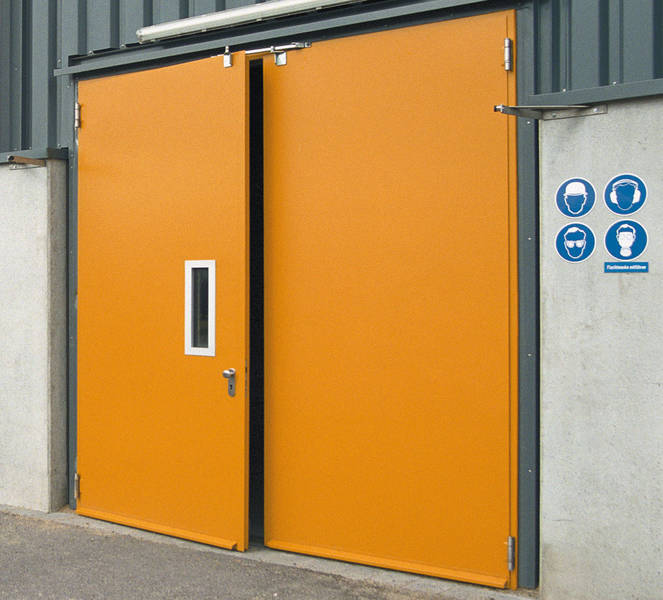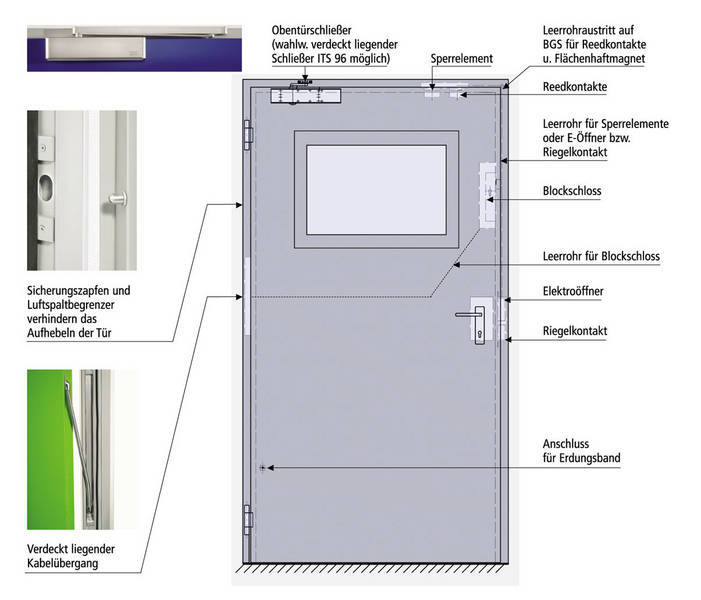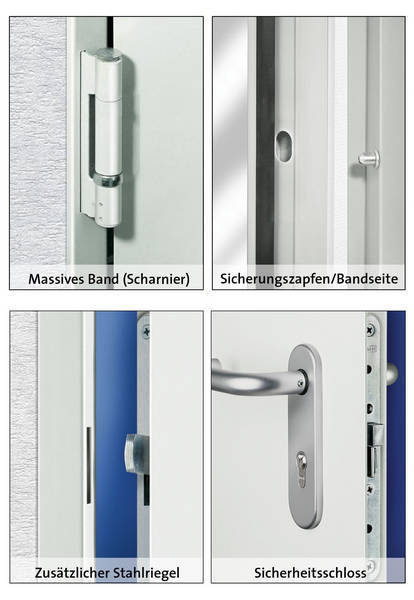Since 2011, new standards have been in place for break-in protection. The classes WK1 to WK6 that were previously valid have been replaced by the European classes RC1 to RC6; this has led to new provisions being added. An overview.
Last year, DIN EN 1627 replaced the previous prestandard (DIN V ENV 1627). This now regulates break-in protection on a European level; adherence to this standard is obligatory. The most visible indicator of this is the language change: RC – Resistance Classification is now being used instead of WK – Widerstandsklasse. There are still six classes, however these new classes are not structured in the same way that the previous WK classes were. The standard now applies to windows, curtain walls, grid elements and closures as well as to doors. The following text concentrates on the door component.
Correlation of the resistance classifications
The new classes have become stricter in nature and the toolkits required for the test have been altered. As such, the WK classes can not simply be converted into RC classes: Only for classes WK 4 or WK 5, the test that was valid for the previous standard (DIN V ENV 1627) can be used to place a product into the new RC 4 and RC 5 classes. Supplementary tests must be performed to convert WK 2, WK 3 and WK 6 into RC 2, RC 3 and RC 6. A test must be performed for the classification RC 1. Even in the entry level (RC 1N), the new test also means that a more resistant element is present than was required for the WK 1 class. For example, the police would not have recommended WK 1 doors.
The RC 1N and RC 2N classes are new. They affect glazed elements in which the glass it contains is not subject to regulations but the element itself is. This has not been present in Germany up until now, but it was common in several other European states; so as a compromise, it will now be a part of European standardisation. The police advise the public to install RC 1 / RC 2 doors and windows instead of ones conforming to the RC 1N / RC 2N standards.
Doors with an ET classification in accordance with the old DIN 18103 are no longer being considered.


It’s not just the door that needs to be resilient
A country-specific appendix determines which locks, lock cylinders or security fittings are to be assigned to which RC. For RC 3 doors, these might be security fittings that correspond at least to the ES2 / ES2-ZA class, class 4 locks and class 21-, 31- 71-BZ cylinders.
The standard also stipulates regulations for the walls as well, since break-in protection only works when the thieves can't see any other ways to get inside. Minimum thicknesses and minimum requirements for the compressive strength are increased as the protection class goes up. This applies to both masonry and reinforced concrete. Furthermore, normative figures for further wall types are defined - such as for autoclaved aerated concrete walls.
Their resilience must be greater in higher resistance classes than in the lower ones, just as is the case for glazing. A class RC 4 component may only be fitted with P6B glass or higher (in accordance with EN 356), whereas P5A glass is sufficient for class RC 3 components. All non-glazed fillings must not fail in any way in the resistance class claimed.
Certification mark
Certified components bear a corresponding certification mark. This is label with a resistance class and it confirms that the component has passed the necessary test. Many manufacturers that use a certification mark regularly volunteer to allow external personnel to monitor and document their activities, making it even clearer that their products conform to the standards.
The escape door is a special case
The requirements for the design of escape door are greater - finally, there is a conflict between opposing targets the doors have to comply; i.e. break-in protection from the outside and the need for them to be easy to open from the inside at all times. For example, we must ensure that the door handle cannot be reached from the outside using a wire loop. Solutions to this problem can be in the form of half-round or impact barriers; these prevent a wire loop being inserted under the door leaf. Likewise, glazing must be resilient enough to prevent (small) holes appearing if they are struck hard, as these holes could permit access to the door handle. As such, they should exceed the requirements of the standard level according to EN 1627.
Additional notes
The testing standards appropriate to EN 1627 have come into force (EN 1628 – 1630). There is no current European standard that regulates the break-in protection that gates must have.


24 Oct 2025
This video shows how much money you’ll save on heating by fitting an insulated CarTeck garage door compared to other garage door types on the market… It’s a surprisingly significant amount!

23 Oct 2025
Buying a standard sized side hinged garage door can sometimes mean a poor fit, requiring additional work and cost to make good. In this video, you’ll see that CarTeck insulated side hinged garage doors are made to measure every time for the perfect fit.

23 Oct 2025
In this video, you’ll see how CarTeck insulated side hinged garage doors’ concealed hinges remove an obvious point of attack, keeping your possessions and any access doors to your home safe and secure.